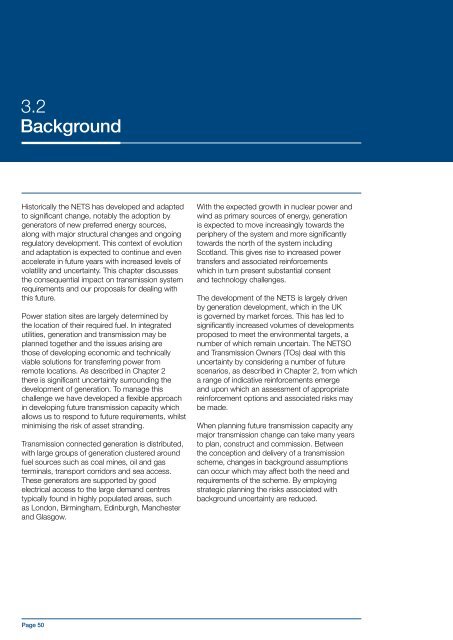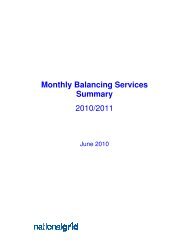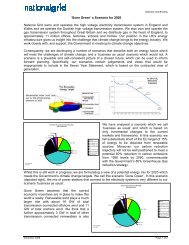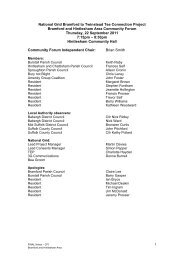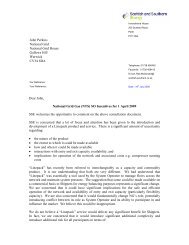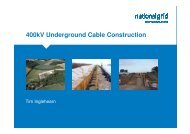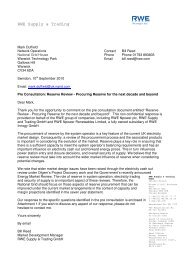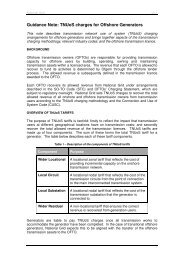Electricity Ten Year Statement - National Grid
Electricity Ten Year Statement - National Grid
Electricity Ten Year Statement - National Grid
Create successful ePaper yourself
Turn your PDF publications into a flip-book with our unique Google optimized e-Paper software.
3.2<br />
Background<br />
Historically the NETS has developed and adapted<br />
to significant change, notably the adoption by<br />
generators of new preferred energy sources,<br />
along with major structural changes and ongoing<br />
regulatory development. This context of evolution<br />
and adaptation is expected to continue and even<br />
accelerate in future years with increased levels of<br />
volatility and uncertainty. This chapter discusses<br />
the consequential impact on transmission system<br />
requirements and our proposals for dealing with<br />
this future.<br />
Power station sites are largely determined by<br />
the location of their required fuel. In integrated<br />
utilities, generation and transmission may be<br />
planned together and the issues arising are<br />
those of developing economic and technically<br />
viable solutions for transferring power from<br />
remote locations. As described in Chapter 2<br />
there is significant uncertainty surrounding the<br />
development of generation. To manage this<br />
challenge we have developed a flexible approach<br />
in developing future transmission capacity which<br />
allows us to respond to future requirements, whilst<br />
minimising the risk of asset stranding.<br />
Transmission connected generation is distributed,<br />
with large groups of generation clustered around<br />
fuel sources such as coal mines, oil and gas<br />
terminals, transport corridors and sea access.<br />
These generators are supported by good<br />
electrical access to the large demand centres<br />
typically found in highly populated areas, such<br />
as London, Birmingham, Edinburgh, Manchester<br />
and Glasgow.<br />
Page 50<br />
With the expected growth in nuclear power and<br />
wind as primary sources of energy, generation<br />
is expected to move increasingly towards the<br />
periphery of the system and more significantly<br />
towards the north of the system including<br />
Scotland. This gives rise to increased power<br />
transfers and associated reinforcements<br />
which in turn present substantial consent<br />
and technology challenges.<br />
The development of the NETS is largely driven<br />
by generation development, which in the UK<br />
is governed by market forces. This has led to<br />
significantly increased volumes of developments<br />
proposed to meet the environmental targets, a<br />
number of which remain uncertain. The NETSO<br />
and Transmission Owners (TOs) deal with this<br />
uncertainty by considering a number of future<br />
scenarios, as described in Chapter 2, from which<br />
a range of indicative reinforcements emerge<br />
and upon which an assessment of appropriate<br />
reinforcement options and associated risks may<br />
be made.<br />
When planning future transmission capacity any<br />
major transmission change can take many years<br />
to plan, construct and commission. Between<br />
the conception and delivery of a transmission<br />
scheme, changes in background assumptions<br />
can occur which may affect both the need and<br />
requirements of the scheme. By employing<br />
strategic planning the risks associated with<br />
background uncertainty are reduced.


